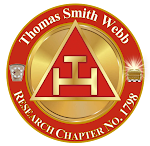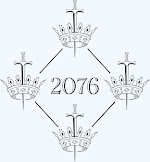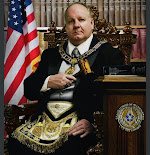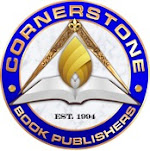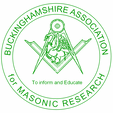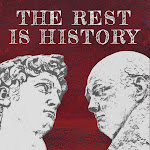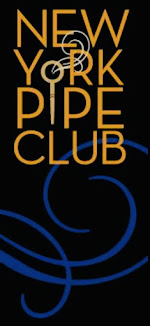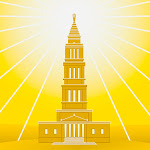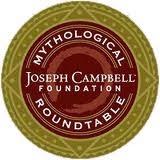Two hundred years ago today—and at this very minute—New York’s Freemasons were hosting and toasting their historic Brother, the Marquis de Lafayette. The last surviving general of the American Revolution was invited to the United States by the Masonic Order to be a “Guest of the Nation” for a valedictory tour in the autumn of his life.
He had landed at New York the previous month and traveled New York and New England, enthralling cheering crowds all throughout. He returned to Manhattan before continuing travels that would extend well into 1825 and would encompass all twenty-four states.
Bro. Chris Ruli released his second book last month; Brother Lafayette recounts the Masonic details of the historic tour. I haven’t seen it yet, but I aim to buy a copy next Thursday when Chris comes to the Livingston Library for a talk. But, on Monday, September 20, 1824, a grand banquet of more than 500 Freemasons was hosted at a place named Washington Hall, located on Broadway at Reade Street. In lieu of Chris’ book, I turn to Lafayette: Guest of the Nation, which consists of contemporaneous local newspaper reportage, and was compiled and edited by Edgar Ewing Brandon and published in 1957. Quoting the September 21, 1824 edition of The Evening Post, the book says:
Masonic Dinner to La Fayette
Yesterday afternoon in consequence of previous arrangements, General La Fayette partook of a dinner at Washington Hall, to which he had been invited by the Grand Lodge of this State. From 5 to 600 of the Craft, decorated with their sacred symbols, were present.
Language is inadequate to give a correct description of the scene. On entering the room, we found ourselves in the midst of a magnificent temple, at the upper end of which was raised a vaulted pavilion, the canopy supported by marble columns, the front arch decorated with laurel and flowers; at the center of which was a brilliant illuminated star.
In the rear of the pavilion, and immediately behind the General, was a beautiful transparency, emblematic of Masonry. The floor was here raised about two feet from the level of the room, on which was placed a circular table, extending from column to column, and garnished in the most splendid style with temples and candle branches of great magnitude and exquisite beauty. At this table was seated the General, and the Right Worshipful Grand Masters and Wardens.
Immediately opposite, and at the other end of the room, was a splendid alcove, having in the center a fine transparent painting, representing the Genius of America, elevated on a pedestal, and holding in each hand a wreath. On one side of the pedestal was a fine and well executed full length likeness of WASHINGTON, and on the other a similar likeness of LA FAYETTE, both in Masonic costume, and joining their hands in brotherly friendship. On the front was inscribed “Veritas et Lux”—Truth and Light. At the bottom was a plow, sheaf of wheat, &c.
The whole of this group was placed within a circular colonnade of thirteen columns, and around the columns were entwined the names of 76 distinguished patriots of the Revolution. On the top of each column was a letter, the combination of which formed the motto “E Pluribus Unum.”
The front of the alcove presented two columns supporting an arch, at the center of which was a star of variegated lamps. At the piers opposite the door of entrance, was hung full length likenesses of Washington and Hamilton, both looking towards the pavilion, painted in oil, and in elegant carved and gilt frames, ornamented by appropriate trophies. Over these two pictures was a transparent rainbow.
Between the columns of the pavilion and the alcove were four other columns, supporting hemispheres, and uniting at the head of the room, where was fixed a large resplendent sun, its center formed of convex looking-glass, which reflected the different objects below in all directions, and produced a very sublime effect. Eight immense chandeliers of cut glass were suspended from the ceiling, and a vast number of lamps and candles were distributed throughout the temple, which sent forth an inconceivable blaze of light.
Over the door of the entrance was an extensive bower of evergreens, suspended to the branches of which was a transparent atmosphere with the words “Lafayette, the Friend of Freedom, and Benefactor of Mankind.” Within this bower were seated the musicians, entirely hid from the view of the company.
Down the interior of this immense temple, a space of about 80 feet in length, were placed six tables, besides the two at the top and bottom, which were laid out in the most splendid style and loaded with all the delicacies and elegancies that could be procured, and arranged in a manner which reflects great credit on Mr. McIntyre, the keeper of the House, who appears to have exerted himself, particularly on this interesting occasion, to give entire satisfaction to the brotherhood.
The decorations under the general superintendence of the Committee were got up by Mr. Andrews; the transparencies, by Mr. Reinagale and Mr. Herring; the oil paintings by Stewart and Trumbull; and the joiner work by Mr. Newcomb.
During the dinner, several appropriate toasts were given, a list of which we have not yet received. The following song, written for the occasion by a well known native bard at the special request of the Committee of Arrangements, was sung by Mr. Keene, and received with great applause.
FAYETTE’S RETURN
TUNE: “Anacreon in Heaven”
The hero hath come in the eve of his day,
To the land where he planted the tree of his glory,
And warmly that land doth her gratitude pay,
And long shall she cherish his name in her story;
Each heart springs to meet him In triumph he moves Midst the men who adore him,
The men whom he loves
And the stars of our banner in darkness shall set,
Ere oblivion gather the wreath of FAYETTE.
He hath come to us now in his fulness of fame,
And proudly we claim him our friend and our brother,
For he guarded the altar of freedom whose flame
Oppressions fierce minions all vainly would smother;
He bled in our cause
With our fathers of old,
When their flag of defiance
They sternly unrolled—
And ne’er shall the sons of such heroes forget
The friend of their fathers, the gallant FAYETTE.
Following the reprint of this description of the Masonic banquet, the Commercial Advertiser in the issue of September 23, printed also the address of the Worshipful Master of the Grand Lodge. No newspaper consulted published a list of the toasts. The following is the address of the M.W. Grand Master, Martin Hoffman, to Gen. La Fayette, on his entering the Grand Lodge:
 |
| This book’s title page. |
BROTHER LA FAYETTE—Your return to the United States has rekindled the recollections of the surviving warriors and patriots of our revolution, and the joy which pervades every heart evinces the deep gratitude of all our citizens. Permit us, your Masonic Brethren, to join the general voice of gladness, to offer you the hand of friendship, to welcome you among us, and to express the warmest sentiments of brotherly love. We receive you with pride and exultation; we hail you as a BROTHER and PHILANTHROPIST; we cherish you in our hearts as a patron of our order.
To the names of WASHINGTON, LIVINGSTON, CLINTON, and other distinguished Masons of our country who have shed a luster on our institution, who have presided over our labors, who have patronized our assemblies, we now, with heartfelt gratification, record in our annals, the presence and name of LA FAYETTE.
To which the General made the following reply:
Most Worshipful Grand Master, and beloved Brethren—I am happy in your affectionate welcome; I am proud of the high confidential honors you have conferred, and purpose farther to confer upon me. Our Masonic institution owes a double luster to those who have cherished, and to those who have persecuted it. Let both glories, equal in my opinion, be the pride of every member of our fraternity, until universal freedom insures to us universal justice.
As already noted, Lafayette was eager to reach the Federal Capital—“the seat of government.” He had been apprized that extensive preparations were making in Philadelphia and Baltimore for his reception in those cities which would consume many days. He had been detained in New York by the repeated postponements of the Castle Garden Fête, and this, in turn, necessitated a delay in the trip up the Hudson and undue haste in the receptions in the several towns along the river that had invited him to make them a visit. Even this excursion was so hurried that his short stay in various towns was a disappointment to the inhabitants and an embarrassment to himself.
Visit the Chancellor Robert R. Livingston Masonic Library of the Grand Lodge of New York here to see all thirty toasts.
I assume this banquet took place at this very hour two centuries ago because they would want to make greatest use of the daylight, and because the night did not end when the feast concluded. After the festivities, Lafayette and entourage took in a show.
 |
From this summer’s production
of The School for Scandal. |
They adjourned to the Park Theatre to see The School for Scandal, starring a Mr. Barnes as Sir Peter Teazel. This theater was a major venue in its day. Built in 1798, it stood for fifty years at 23 Park Row, right outside City Hall Park, with its 2,000 seats. It burned down December 16, 1848, by which time the theater district had migrated uptown to the Washington Square area.
Amazingly, the Royal Shakespeare Company staged The School for Scandal at the Royal Shakespeare Theatre in Stratford-upon-Avon this summer! It closed two weeks ago. The RSC says:
After Shakespeare but long before Bridgerton, there was The School for Scandal, Richard Brinsley Sheridan’s brilliantly biting comedy of manners in five acts. This new production—styled to the nines with period flair—promises an exuberant feast of big wigs and even bigger laughs. 1770s London, where the aristocracy’s morals have plunged lower than the necklines on the women’s gowns. The vicious Lady Sneerwell enjoys ruining reputations for pleasure, and her latest target is the young bachelor Charles Surface—why should this pretentious little rake inherit his uncle’s fortune? Together with Charles’ conniving brother Joseph, Sneerwell orchestrates an elaborate scheme of intrigue and infidelity that’s sure to ruffle all the right feathers—hopefully.
My original plan for tonight was to bring The American Lodge of Research to host an anniversary dinner either in that neighborhood or maybe half a mile north at Le Coucou on Lafayette Street. It was too difficult to plan, frankly. It’s a busy time, particularly with fêtes Lafayette. Maybe in 2074, eh?
Click here to keep track of New York Freemasonry’s many celebrations of the Lafayette Bicentenary.
Bon week-end!
























